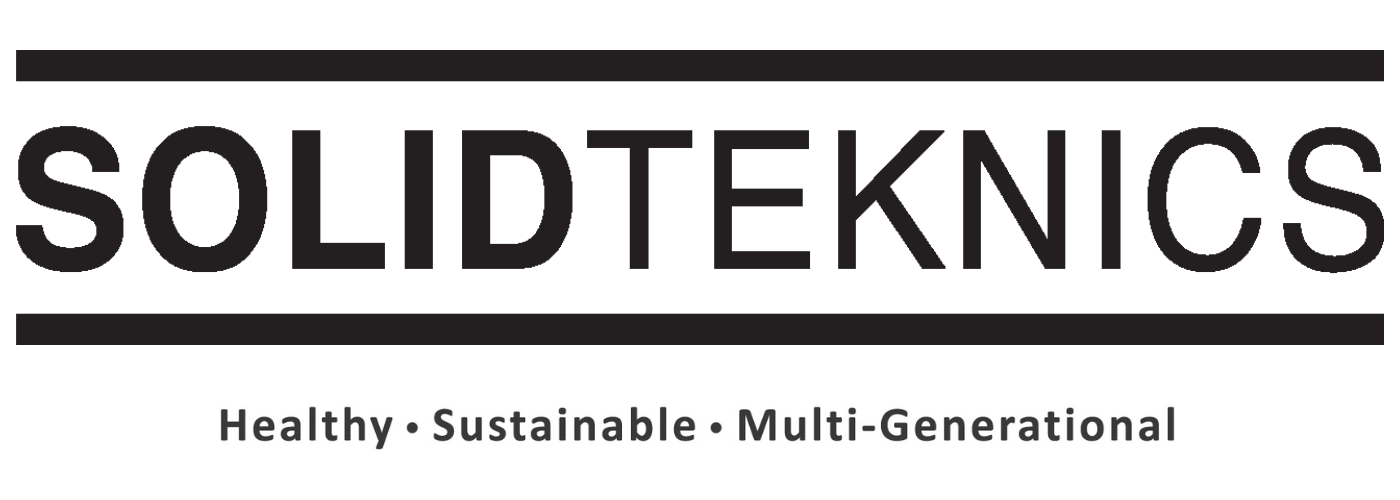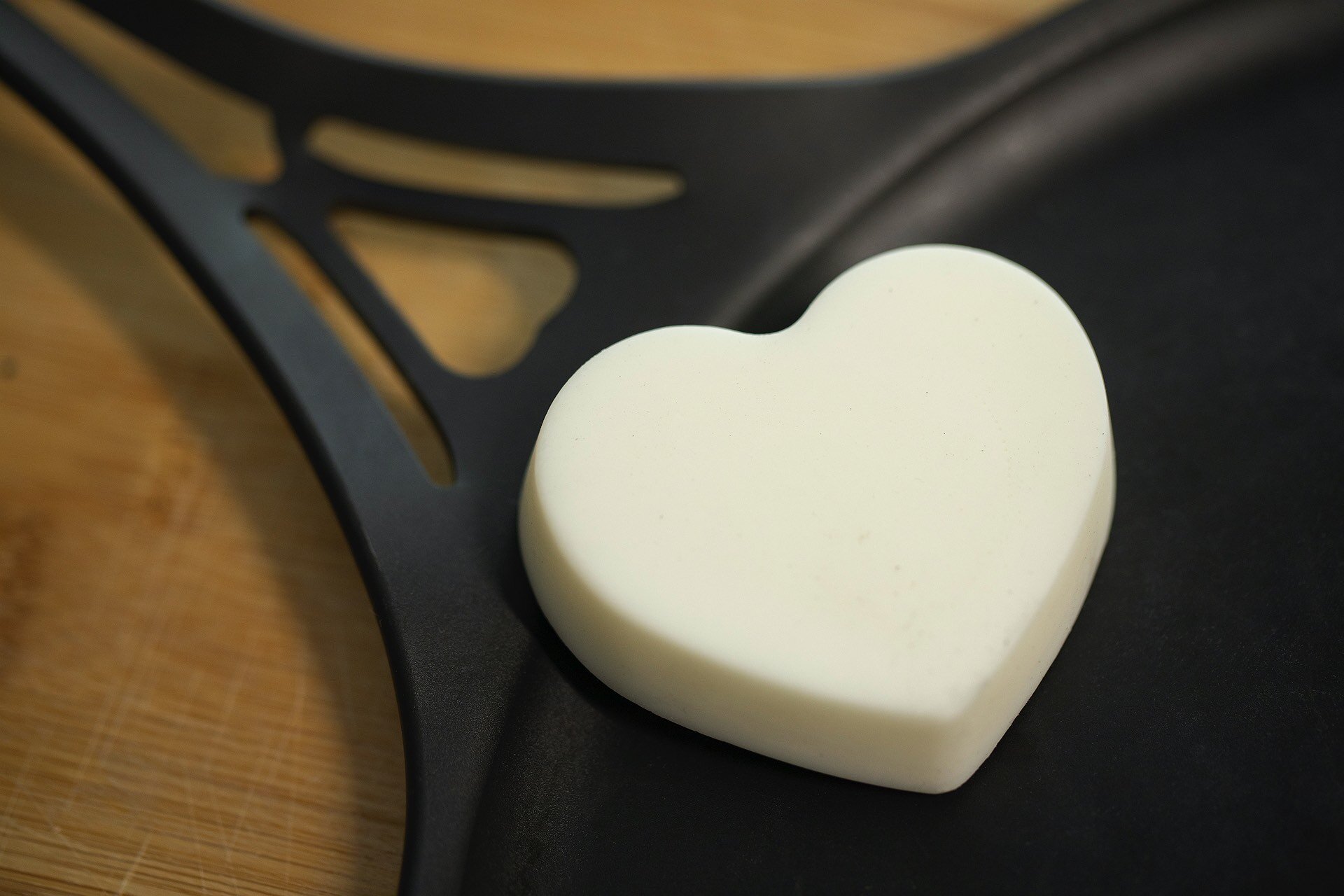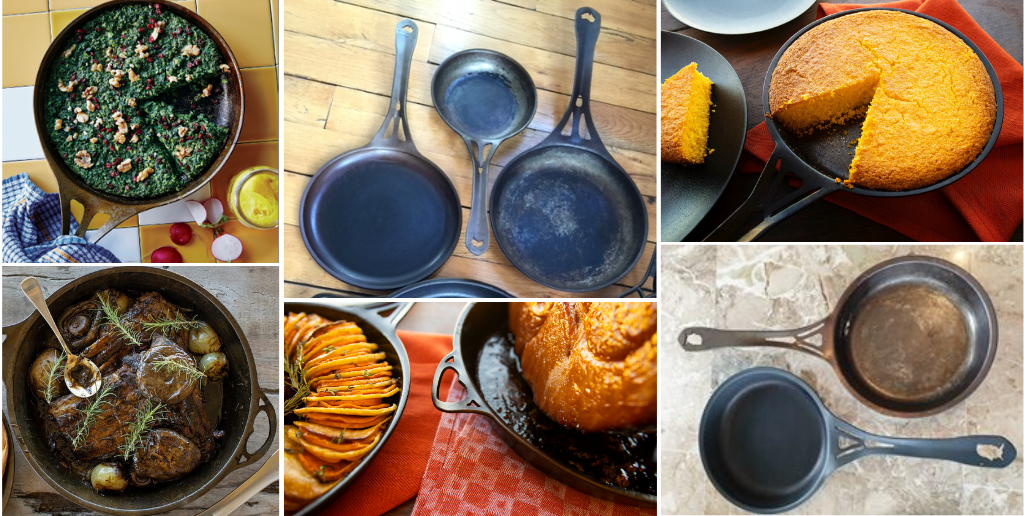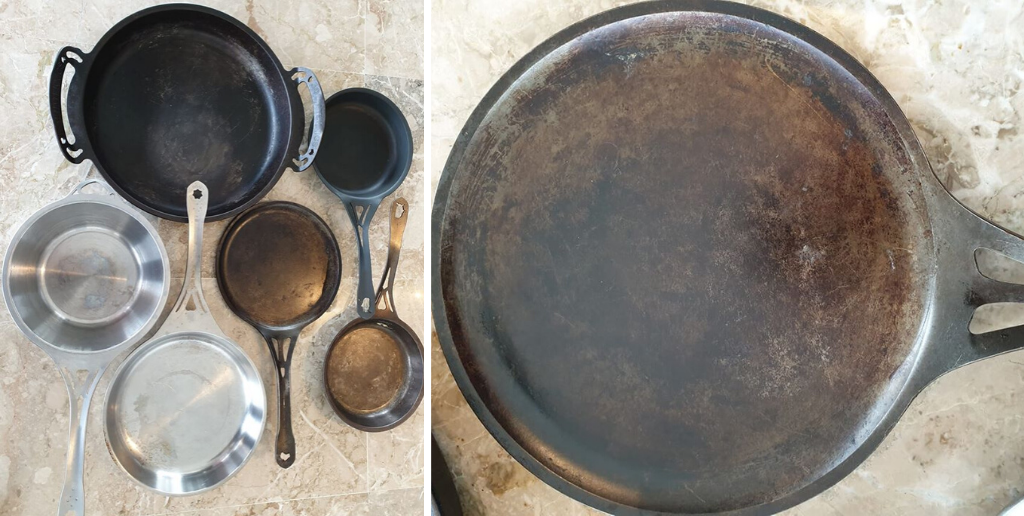SEASONING & CARE INSTRUCTIONS FOR YOUR QUENCHED™ US-ION™ COOKWARE
FOR US-ION™ BAKING TRAY CARE INSTRUCTIONS, CLICK HERE
FOR NÖNI™ STAINLESS STEEL CARE INSTRUCTIONS, CLICK HERE
What is seasoning?
Seasoning is simply oil baked onto an iron or steel pan, and transformed into a hard inert coating. Seasoning has two purposes: it prevents rust, and it provides a natural non-toxic non-stick finish that continues to improve with attentive cooking. With prudent care and maintenance, seasoning will continue to improve with age. Seasoning can refer to both the initial finish of the cookware as well as the ongoing process of maintaining that finish.
Seasoned iron is the only known non-toxic and forever-renewable nonstick. All other non sticks are made with toxic and/or disposable synthetic coatings.
What is Quenched™ seasoning?
A world-first, Quenched™ seasoning involves heating each pan to a precise high temperature, then quickly dunking it in a chilled tank of one of the best oils for seasoning: rice bran oil. The end result is healthy oil instantly transformed into a strong black layer of hard, inert, non-toxic seasoning.
There are two steps to seasoning: 1. Oven seasoning to prevent corrosion; 2. Stove top seasoning to create a non-toxic, non-stick cooking surface.
Our Quenched™ skillets have been pre-seasoned at the factory, so we have done the oven seasoning/rust prevention for you. The base layers of the non-stick cooking surface have also been laid down, so Quenched™ pans are ready to cook “out of the box”.
Enhancing and maintaining your Quenched™ pan
To enhance the non-stick foundation, and for quick top-ups when needed, we recommend stove top seasonings:
In a well-ventilated room, SLOWLY heat skillet on the stove. Note: It is necessary to slowly heat all metals to avoid warping - we recommend warming on a lower temperature before cranking up the heat!
Melt the equivalent of a teaspoon of your Iron Love™ seasoning conditioner bar, or drop in a teaspoon of a recommended seasoning oil (rice bran oil, seed oil, canola oil or shortening), and wipe the inside surfaces with a lint-free cloth or paper towel, held in tongs for safety. The oil should be a very thin polish - barely visible - with no pools or lumps.
Continue wiping around the base and lower sides of the pan for approximately 20 seconds as the skillet smokes, until the oil is dry. NOTE: Take the pan off the heat as soon as the oil is dry, in 20 seconds OR LESS.
Cool for at least 1 minute.
Repeat for 10-15 minutes over two or more sessions, until the base is gloss black and oil repellent.
Alternatively, do it the old school way and just start cooking with fats and oils, washing gently, and letting the seasoning build up over time.
Cooking with your Quenched™ skillet
Our larger pans are designed with a 2-3mm concave to allow for movement of the metal when heated, and will level out as you cook. For more information on this intentional design feature, click here.
Induction cooktops can put out a lot of heat instantly. Just as you should not put a hot pan under cold water, you should not expose a cold pan to intense, instantaneous stovetop heat (ovens are a different matter as the pan will heat uniformly). It is necessary to SLOWLY heat pans for stovetop use, as well as correctly matching the burner size to the pan size. Otherwise, the metal can potentially be warped. Click here to view our warranty policy.
Our wrought iron skillets are manufactured in highly conductive material that heats quickly and evenly. Our skillets can take the heat of a commercial kitchen, but they do not need to: medium heat will become your new normal.
The most important factors to get the most out of your Solidteknics wrought iron skillets:
Moderating the cooking temperature
Using an adequate amount of fats and oils to prevent sticking.
Cleaning your Quenched™ skillet
Proper washing is the key to seasoning success: The biggest error with seasoned iron is leaving carbonized food particles stuck to your seasoning. Remove any food residue with a wooden scraper, steel wool or chain mail, but leave the black seasoning behind. If you can feel any lumps, that’s food not seasoning, and we suggest you smooth them down so they don’t act as hooks for your food next time around!
After cooking, run the skillet under hot water.
Never place in a dishwasher - these skillets are for hand-washing only.
Use a wooden or steel scraper to carefully remove food residue. No soap needed! Use a brush, if necessary, taking care to retain the beautiful black seasoning you have achieved.
Wipe with a towel or paper cloth to dry while the skillet is still warm.
Place skillet on stove top and turn heat on low for a final dry, if needed.
Tips and tricks
This is a big improvement over other seasoned iron skillets, but don't expect to immediately have synthetic, disposable, non-stick-pan levels of slipperiness. It's close, but not always as slick as synthetic coatings. However, this is much better than synthetics: a natural non-toxic non-stick that only gets better with time, not worse!
Once a skillet is well-seasoned, cleaning can be as easy as wiping out with a paper towel.
If your skillet develops rust, gently scrub it away. Keep cooking or spend a few minutes stove top seasoning as per the instructions above.
If your seasoning works a little too hard with acidic foods or high heat, you may notice some dark residue on your towel when cleaning. This is perfectly safe and normal and will go away with regular use and care.
Seasoning layers will wear off (including Quenched™) if seasoning is not properly maintained or basic cooking guidelines (monitoring of heat, use of fats/oils when cooking, etc.) are not followed. The solution? Re-season! Instructions for seasoning a raw skillet can be found here.
Enjoy the pride in building your own healthy, natural, non-stick, innovative 100% USA-made iron skillet!
SEE OUR SEASONING FAQS HERE.
It’s not a beauty contest!
Solidteknics skillets are built to be workhorses, not beauty queens.
Iron pans can become a little patchy, but don't worry: this is normal! The real beauty of iron pans is that the seasoning is forever renewable.
The image at bottom right shows a US-ION™ Quenched™ and a US-ION™ Raw* skillet. The Quenched™ finish was followed up with one quick stove-top season, while the US-ION™ Raw pan has been through the full oven and stove top process. Each skillet has had similar cooking time...and both still cook perfectly. Performance is the real key! *RAW skillets are no longer retailed in the USA.
The skillet on the right hand side of the image above is "well seasoned": perfectly non-stick and sealed from rust. This skillet hasn't been re-seasoned since it was a prototype back in 2015 (note the rough edges); it has just been used to cook with plenty of fats/oils and carefully washed to remove all food residue. Just the way it's been done with wrought iron for 3,000 years!
IMPORTANT: READ BEFORE USE!
Oven burn risk: Take care when handling any hot metal skillet, especially when removing it from an oven. Use oven mitts to protect your hands, and trivets to protect surfaces. After removing from an oven we recommend leaving the heat sock, mitt or towel over the handle to remind yourself the handle may still be hot.
Stove burn risk: Our longer skillet handles are designed to resist heat transfer up the handle, and this works so successfully that hand heat protection is normally not required. This of course does not apply to ovens, or when the handle has been exposed to direct heat from underneath (such as over a campfire/coals or burner). The 'cool handle' effect does not work for skillet models with short handles, such as our BIGGA skillet, DEEPA pot or 13” dual-handle wok, although their handle designs are better than most short loop handles.
Thermal shock: Warping and cracking: Beware that iron skillets can be warped, and cast iron has been known to crack, due to thermal shock from heating too quickly on electric or induction cooktops set on maximum heat. Warm your skillet slowly on a lower heat before increasing to higher heats. This is particularly important with induction - please read 'Induction warping' below. Thermal shock may result from cooling too quickly - never expose a hot skillet to cold water. Thermal shock can crack cast iron or warp steel pans, no matter how thick and tough. Like other situations of 'abuse', warped or cracked skillets from thermal shock or overheating on induction burners are not covered under our warranty.
Induction warping: Our iron skillets are so efficient with induction that heat can become too concentrated in the middle, particularly when the induction ring size is smaller than the pan size, so there is rarely any need to go above medium power settings. Small rings and high power can certainly warp any skillet, and though ours are tougher than most, it is still possible. The issues can be exaggerated with high power or very centrally-focused induction. Like other situations of 'abuse', warped pans from overheating on induction are not covered under our warranty.
Lid security: Please note that our style of lid does not seal, so please be careful! When moving the skillet, hold both sets of handles to secure the lid and prevent it from sliding. This is particularly important when removing from the oven. We recommend removing the lid first and setting aside, before removing the base.
Oil stains: Keep in mind if your skillet is oily on the base it may stain porous surfaces.
Problems or concerns with your seasoning or cookware?
Our warranty (www.solidteknicsusa.com/warranty) does not cover seasoning issues, but we will happily guide you through any seasoning questions you may have. If you’re still in doubt, please don’t post on social media. Give us a chance to help you by emailing our experts directly at info@solidteknicsusa.com.
Join the Solidteknics community!
Unleash the full potential of your new cookware by joining our wonderful Solidteknics Lovers Group: share recipes and advice with the community of 6,000+ members of our dedicated Facebook group.
Thank you for being part of our growing mission for sustainable, healthy, US-made cookware!




